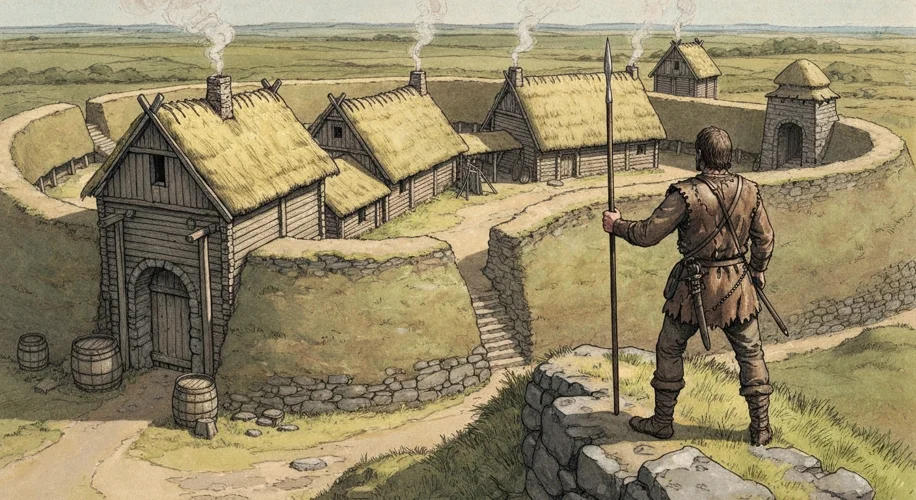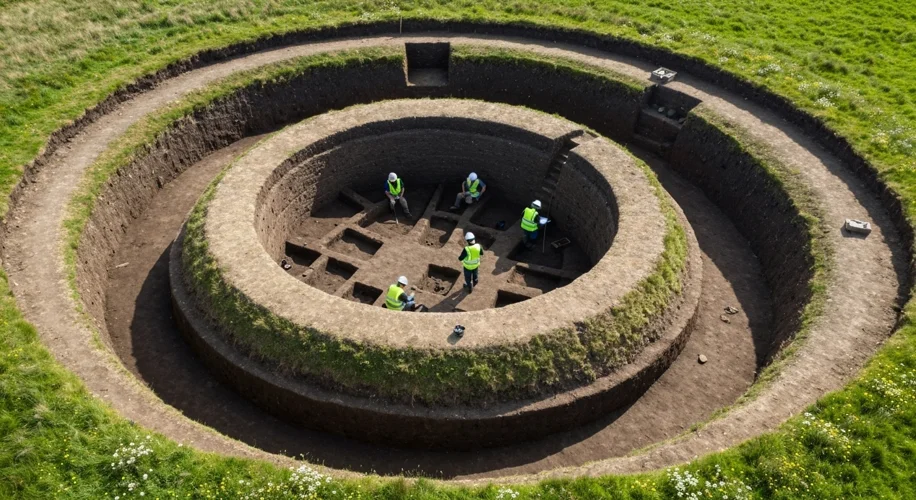Visualize this: the rugged west coast of Ireland, centuries before the Norman invasions, a land sculpted by wind and rain, where chieftains and kings carved out their domains. In the heart of Galway, a remarkable discovery has recently sent ripples through the historical and archaeological communities. The unearthing of several ringforts, definitively linked to powerful early medieval rulers, is offering us an unprecedented glimpse into a society that shaped the very foundations of Irish identity.
The early medieval period in Ireland, roughly from the 5th to the 12th centuries, was a time of dynamic change. Christianity was taking root, monasteries were becoming centers of learning and power, and a complex social hierarchy was firmly established. At the apex of this structure were the rulers, the rí (kings) and rí ruirech (overkings), whose authority was often bolstered by the very landscape they controlled. These were not merely agricultural communities; they were centers of political, social, and economic power. The culture of the time was deeply rooted in kinship, warrior traditions, and a sophisticated legal system, the Brehon Laws, which governed everything from land ownership to personal conduct.
The historical context for these ringforts is crucial. As kingdoms consolidated and rivalries intensified, the need for secure, defensible settlements became paramount. Ringforts, typically circular enclosures surrounded by one or more earthen ramparts and ditches, served this purpose. They were more than just defensive structures; they were symbols of status and authority, the administrative and residential centers of the local elite. The discovery in Galway, specifically dating these sites to a period of intense political maneuvering, adds a vital layer to our understanding of how these early Irish rulers maintained their power and protected their territories.
Key actors in this era were the provincial kings and the powerful families who vied for dominance. Figures like Guaire Aidne mac Colmáin of the Uí Fiachrach Aidhne, who ruled a significant kingdom in what is now southern County Galway in the 7th century, exemplify the type of ruler who would have commissioned and resided in such a fortified settlement. The perspectives of these rulers were likely centered on consolidating their power, ensuring the loyalty of their followers, and defending their lands against rivals. For the common folk, these ringforts would have represented safety, justice (administered by the lord), and the focal point of their community’s political life.
The event itself, the meticulous excavation and analysis of these Galway ringforts, is a testament to modern archaeological techniques.  Archaeologists have uncovered evidence of sophisticated building techniques, including internal structures like houses and workshops, and the defensive features – the ditches and ramparts – speak volumes about the perceived threats of the time. Artifacts recovered, such as pottery shards, metalwork, and even remnants of food, paint a vivid picture of daily life within these elite strongholds. The dating of these finds, through radiocarbon analysis and artifact typology, has confirmed their early medieval origins, firmly placing them in the hands of the powerful chieftains and kings of that era.
Archaeologists have uncovered evidence of sophisticated building techniques, including internal structures like houses and workshops, and the defensive features – the ditches and ramparts – speak volumes about the perceived threats of the time. Artifacts recovered, such as pottery shards, metalwork, and even remnants of food, paint a vivid picture of daily life within these elite strongholds. The dating of these finds, through radiocarbon analysis and artifact typology, has confirmed their early medieval origins, firmly placing them in the hands of the powerful chieftains and kings of that era.
The consequences and impact of these discoveries are far-reaching. They provide tangible evidence of the scale and sophistication of early medieval Irish political structures. The presence of multiple ringforts in proximity can indicate spheres of influence or even the expansion and contraction of a ruler’s territory. This granular understanding of settlement patterns allows historians to redraw the maps of power in early medieval Ireland. Furthermore, the defensive nature of these sites underscores the often-overlooked realities of endemic warfare and inter-kingdom rivalries that characterized the period. It challenges the romanticized view of Ireland as a purely pastoral idyll and highlights the pragmatic, often martial, aspects of early kingship.
In analysis and interpretation, these ringforts are more than just ancient earthworks; they are the stone-and-earth pronouncements of power. They were the visible manifestations of a ruler’s control over land and people, designed to impress allies and intimidate enemies. The complexity of their construction suggests a well-organized labor force, directed by a central authority.  The strategic locations, often chosen for their commanding views or defensible terrain, further emphasize the military and political considerations that shaped the lives of these early rulers. Little did these chieftains know that their fortified homes, built for a time of swords and shields, would one day be carefully unearthed, offering us, a millennium later, a profound connection to their world. They are silent witnesses to a bygone era, their discovery echoing with the resilience and ambition of Ireland’s earliest rulers.
The strategic locations, often chosen for their commanding views or defensible terrain, further emphasize the military and political considerations that shaped the lives of these early rulers. Little did these chieftains know that their fortified homes, built for a time of swords and shields, would one day be carefully unearthed, offering us, a millennium later, a profound connection to their world. They are silent witnesses to a bygone era, their discovery echoing with the resilience and ambition of Ireland’s earliest rulers.


